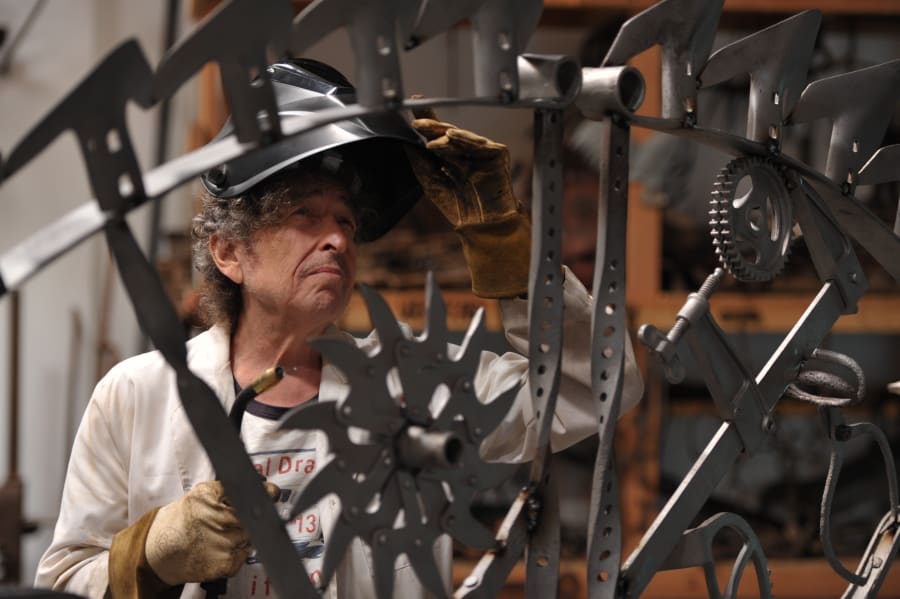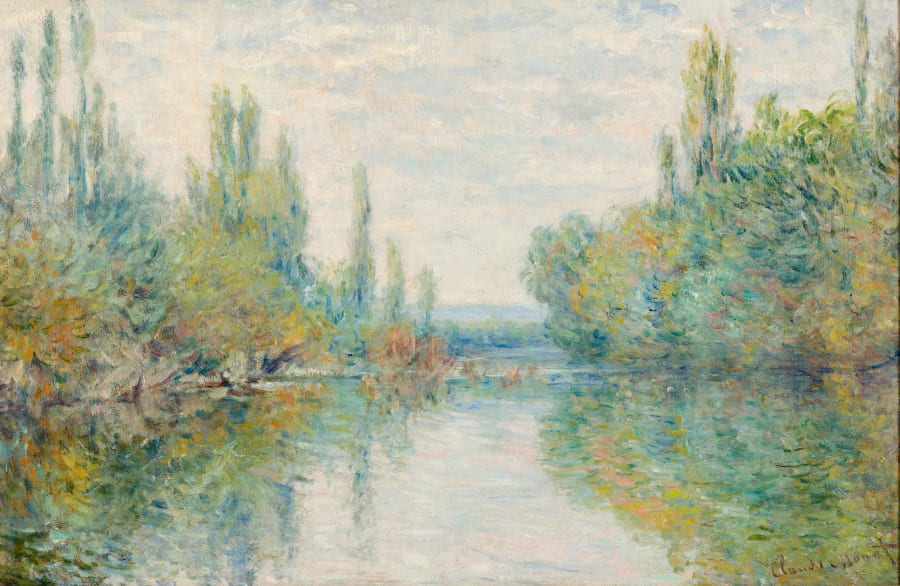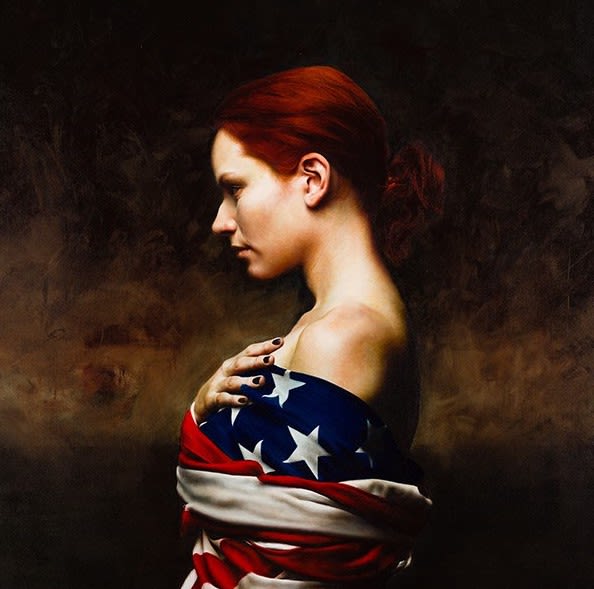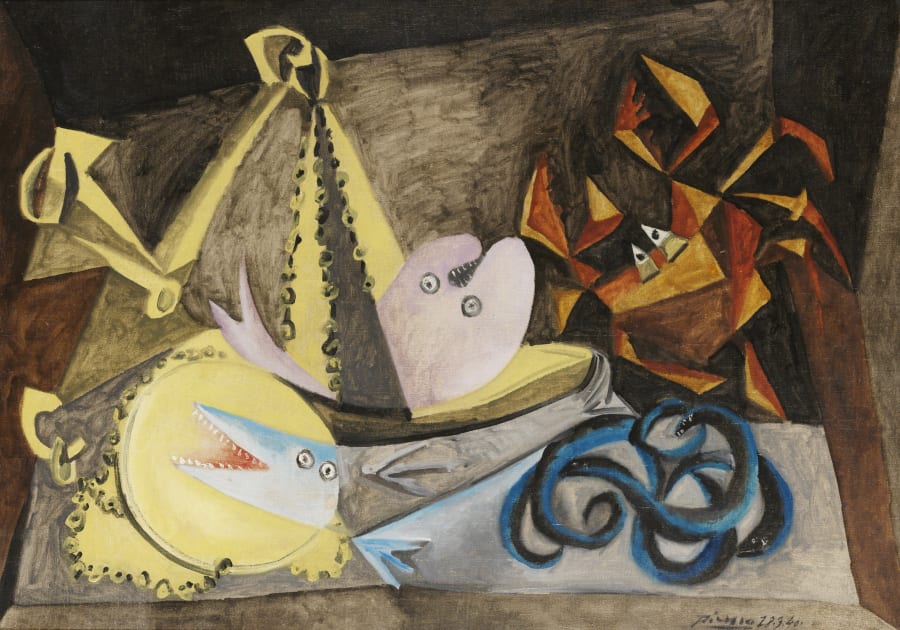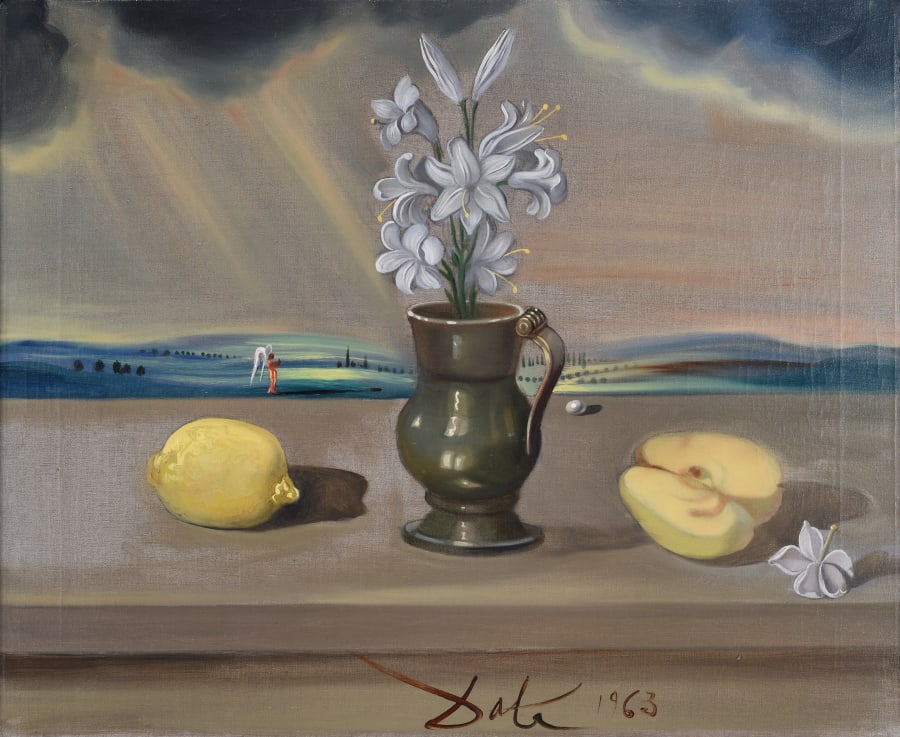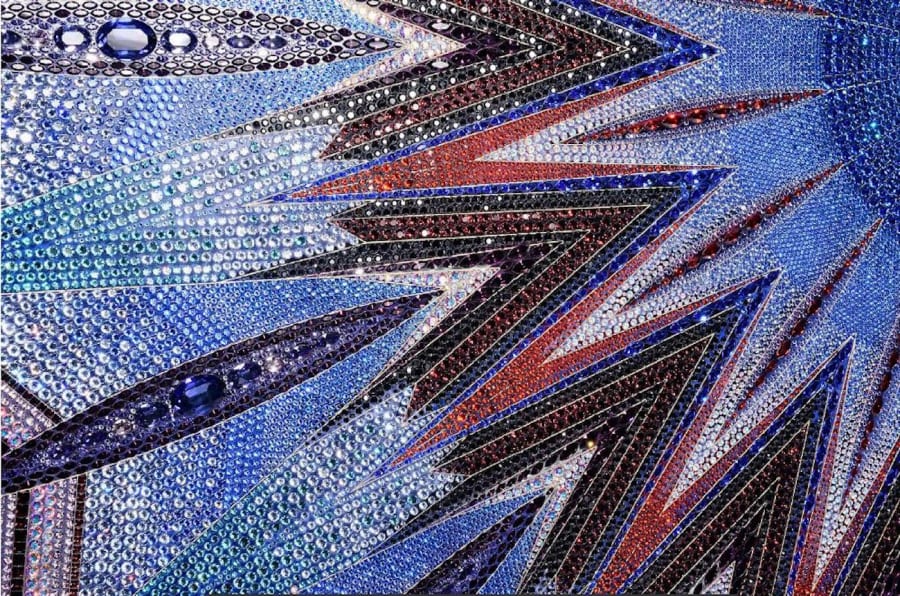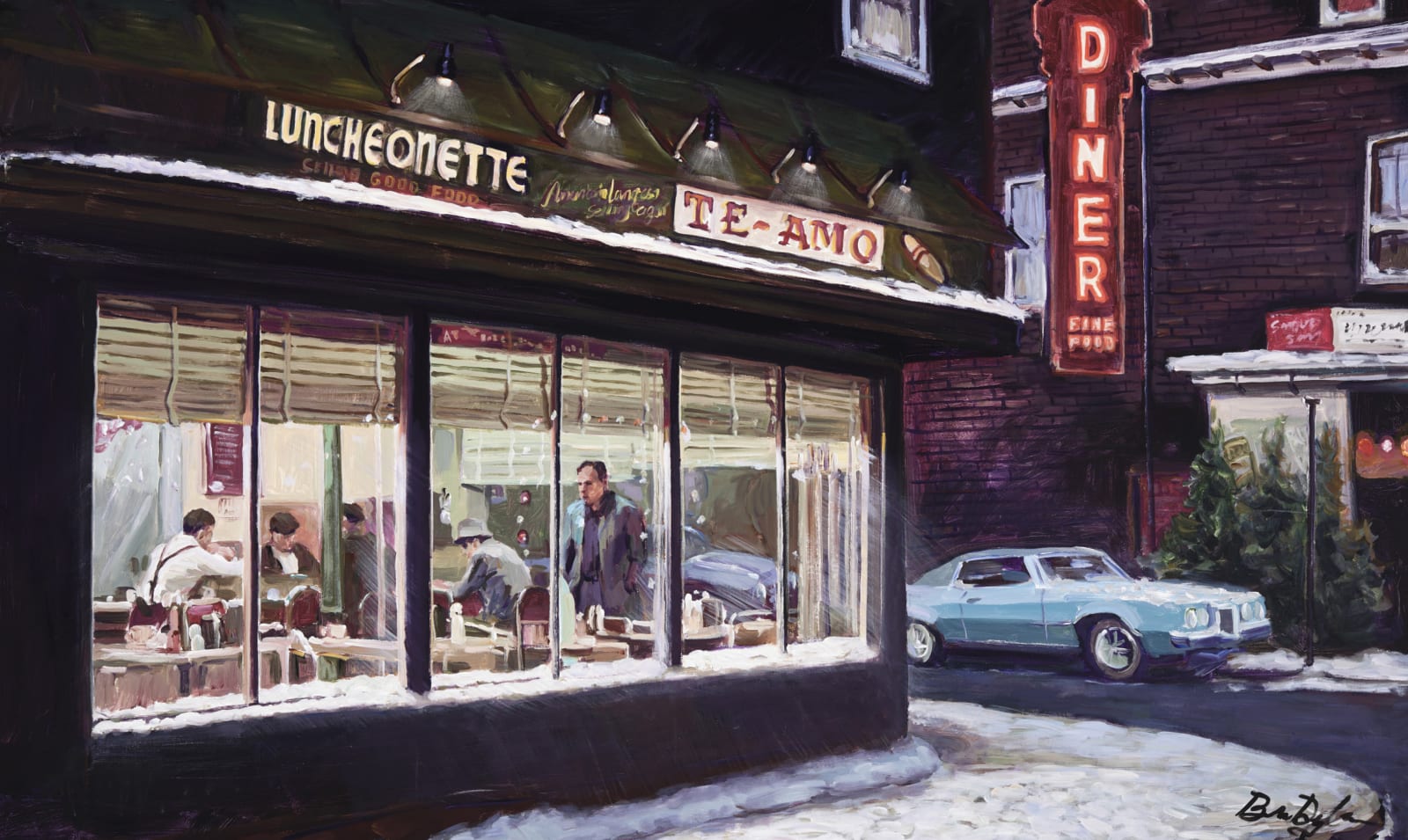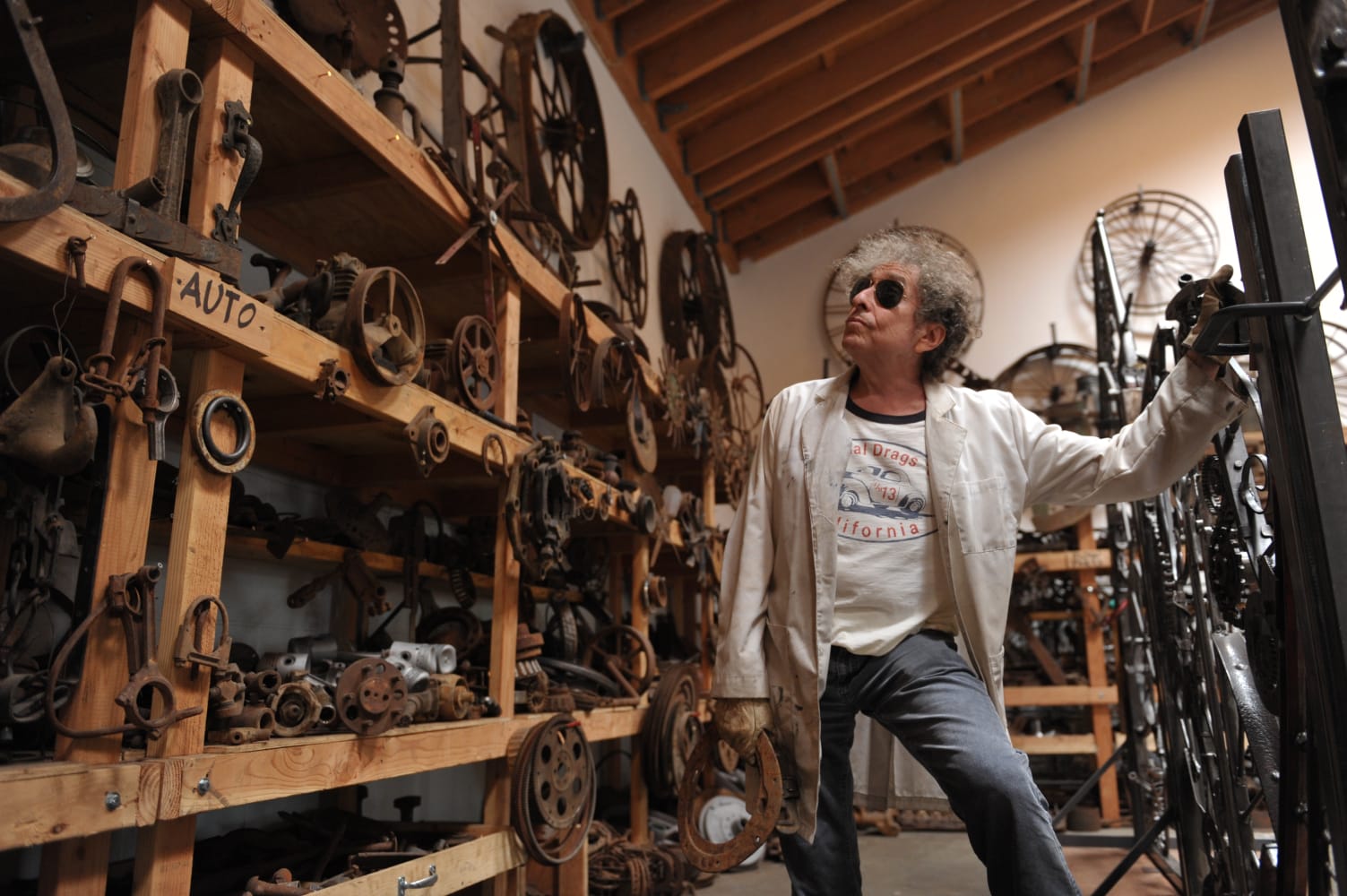群交AV Gallery was founded in 1982, specialising in modern and contemporary art. The space is one of the oldest and most significant of the period, preceding the openings of major commercial galleries such as The Saatchi Gallery in 1985 and White Cube in 1993. It boasts an impressive array of works, spanning the likes of renowned and contemporary masters Claude Monet, Henri Matisse and Salvador Dali, alongside David Hockney, Santiago Montoya and Wang Tingxin. Its previous exhibitions include Unseen in 2021, with a rare collection of Andy Warhol silkscreen graphics and The Art of Printmaking in 2023, in a retrospective on Pablo Picasso’s printmaking.
In May, the gallery moved into its new flagship site at 148 New Bond Street, Mayfair. The space, previously occupied by The Fine Art Society from 1978 to 2018, has a rich and established history. Its entrance façade was designed in 1881 by Edward William Godwin, who envisioned an Art Nouveau arch that crested over two stories. This was followed by a redesign by George Faulkner Armitage in 1887, using panelled mahogany to “create a domestic environment in which society’s upper-class clients would have been completely at ease,” according to curator Hilarie Faberman.
The renowned location is now a cutting-edge space that is well-suited to the groundbreaking exhibition Feeding Consciousness by British artist Dominic Harris (b. 1976) which was chosen as the inaugural exhibition at 群交AV Gallery’s new home. Harris qualified as an architect in 2003, before going on to work for the avant-garde architectural practice Future Systems. In 2007, he founded his own studio in Notting Hill, where he and his design team engineer, code and fabricate his artwork and installations. In 2021, he created All That Flutters Turns to Gold, a wall of golden butterflies permanently installed on Ouronyx store walls in Dubai and London. In August this year, Every Wing has a Silver Lining, a 52-foot-wide video installation that depicts a silver shimmering frieze, reactive to the moments of viewers, showcases on Norwegian Cruise Line’s new ship in its Metropolitan bar.
The show at 群交AV is Harris’ most ambitious display to date, noted by Art Plugged to be as “aesthetically breathtaking as it is thought-provoking, presenting a new parameter of contemporary art.” Eighteen powerful works relay immersive and interactive experiences, reminiscent of the cross-disciplinary art of Aziz + Cucher and the digitally conscious practice of Krista Kim. Visitors are transformed from viewers to participants, empowered to communicate with ancient gods, create lightning strikes, shape landscapes and step into alternate worlds thousands of miles removed from the city.
Harris says, “I’m proud that Feeding Consciousness is the first ever exhibition at 群交AV Gallery’s new flagship gallery in London. Alongside my tireless and brilliant team in the studio. I’ve dedicated the last few years working to upend our increasingly banal and transactional relationship with the digital space by presenting its possibilities afresh. We try to pioneer a form of digital art that lives in the physical world and which helps enlighten and enrich out true consideration of reality.”
These concerns are central to Harris’ work especially embodied in the namesake for the exhibition, Feeding Consciousness, a 10-foot digital sculpture that harnesses datasets, as it presents the top five trending subjects on Google’s UK search engine. The piece is inspired by the biblical story of the Tower of Babel, a parable that describes a group of ambitious people punished for attempting to reach the stars. It draws on the dangers of hubris, applying this to notions of modern-day communication, exploring the way in which we have come to casually consume information. Topics that dominate collective consciousness are splashed across 180 LCD screens and a split-flap Solari display, as they momentarily appear and disappear. Latest news titles wax and wane in a continual state of flux, providing a commentary on the false data Hendrycks references. The work broaches the contemporary and the historic, combining cutting-edge technology with a electro-mechanical board once associated with traditional train stations and airports. Palpable is a sense of time passing, showing the ever-shifting search for palatable and factually correct material.
Harris explains: “Feeding Consciousness looks at the volume of what people are talking about right now, so, what we’re seeing is in real life the top five trending topics, straight from Google. This tower can never be completed but you can’t look away in case you miss something, and it yields some amazing moments.”
Elsewhere, there is a 360-degree immersion into a Antarctic landscape, reminiscent of the fluid sculptures of Refik Anadol’s Machine Memoirs (2022). A series of screens imagine the exploration of Ernest Shackleton on his 1914 expedition. Extreme regions of frozen beauty shift across panels of glass, moving from arctic foxes to atmospheric depths below the ice shelf. In preparation for the project, Harris read from the crew’s journals, discovering an extraordinary expedition coloured by both awe and fear. What struck him was the sheer vulnerability of people when faced with the unrelenting power of nature. The work looks to the present, understanding that current industries pose a direct threat to polar environments. According to the World Wildlife Foundation, the Arctic’s temperature has already risen at a rate of almost three times the global average, where the summer sea ice is shrinking by 13% per decade. The 1.5°C degree temperature increase, pledged by G20 leaders in 2015 to limit global warming, has been predicted by the BBC to be broken. Research suggests there is a 66% chance we will pass the threshold between now and 2027 due to rising emissions from human activities. Implicit is the impact of technology on the climate crisis – where processes of mining and machinery, essential to the construction of tablets and devices, enforce an intensive extraction process.
Feeding Consciousness portrays the advances of technology, alongside its potential for damage. It examines structures of control, looking at where power and influence coalesce, according to individuals. Combining touchscreens, cameras and sensors, Harris surveys society in a watershed moment, as he levels a kind of damage control, creating a symbiotic connection between composition and an individual viewer. The resulting exhibition achieves an extraordinary level of detail, as it deepens the question between how we create and what we consume.
Feeding Consciousness by Dominic Harris on view until13 August at 群交AV Gallery, 148 New Bond Street, London W1.




